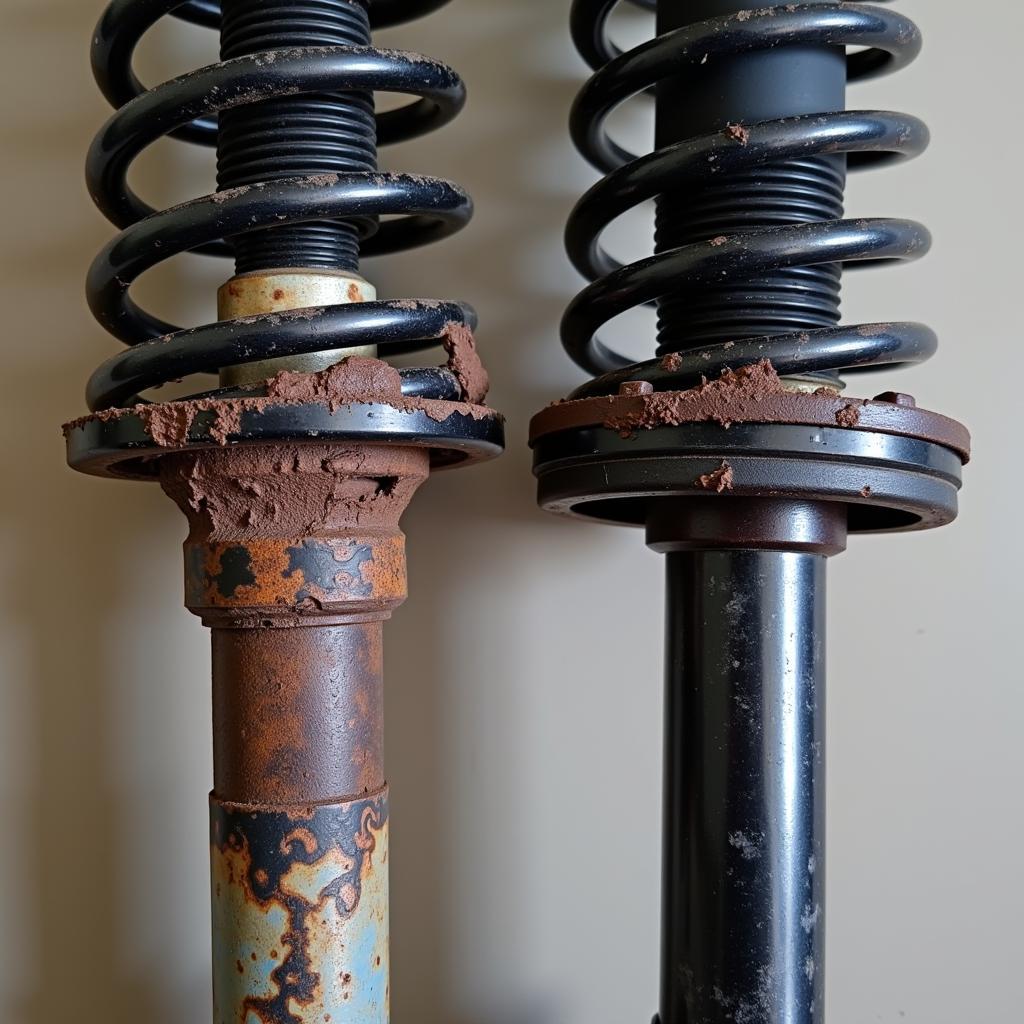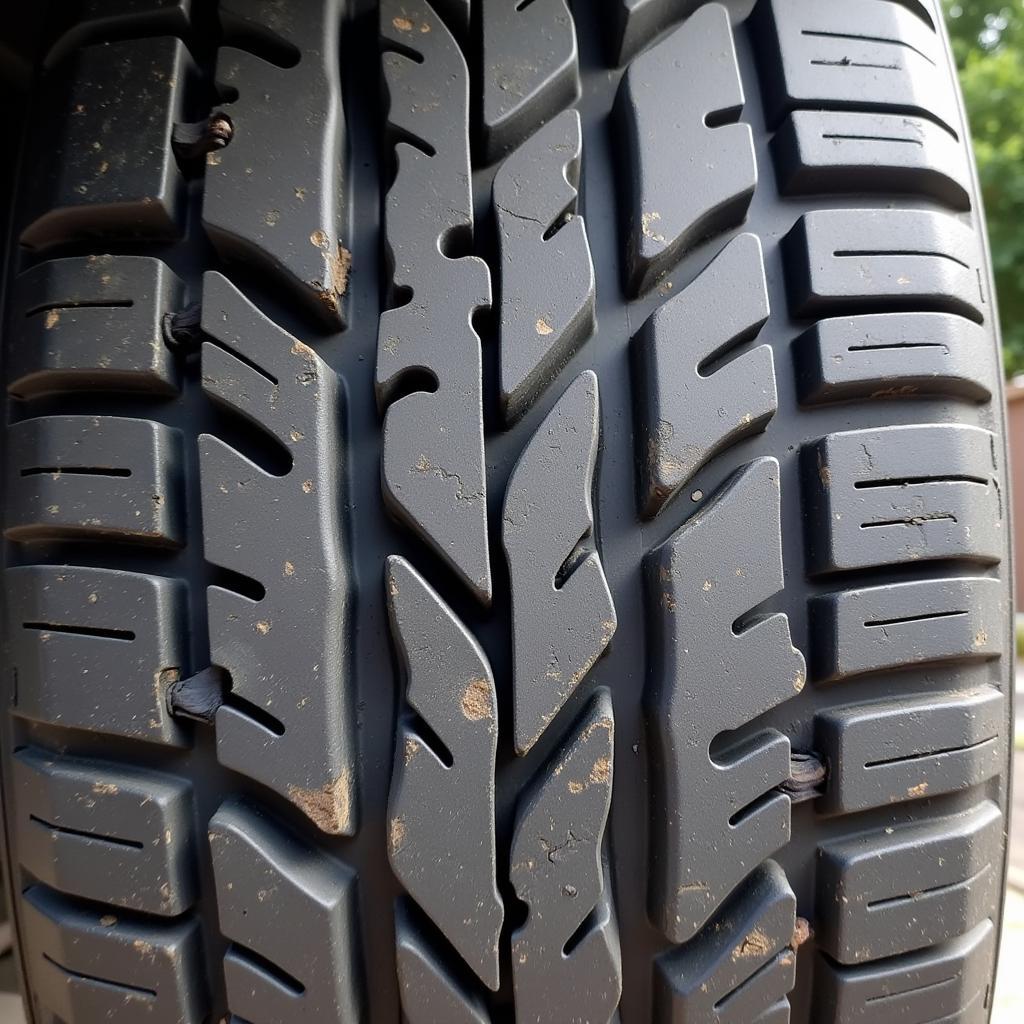Car Strut Problems Symptoms can range from subtle noises to significant handling issues. Ignoring these symptoms can lead to more extensive and costly repairs down the line. This guide will help car owners, mechanics, and technicians diagnose and address car strut issues effectively.
Are your struts going bad? Let’s find out! Struts are critical suspension components that provide both shock absorption and structural support, impacting ride comfort, handling, and overall safety. This article covers everything from identifying those pesky car strut problems symptoms to understanding their underlying causes and exploring effective solutions. infiniti cars mechanical problems often involve strut issues, so understanding this component is crucial.
Understanding the Role of Struts
Struts are essential for a smooth and controlled ride. They dampen vibrations from road imperfections and keep the tires in contact with the road surface. Worn-out struts compromise these functions, impacting vehicle stability, braking performance, and tire wear.
Why are Struts Important?
Struts play a vital role in vehicle safety and performance by maintaining tire contact, absorbing shocks, and ensuring even tire wear. Neglecting strut problems can lead to uneven tire wear, reduced braking efficiency, and compromised handling, especially during emergency maneuvers.
 Worn Out Strut vs. New Strut
Worn Out Strut vs. New Strut
Common Car Strut Problems Symptoms
Several tell-tale signs indicate potential strut issues. Being able to recognize these symptoms is the first step in addressing the problem effectively.
What are the Signs of Bad Struts?
Common car strut problems symptoms include a bouncy ride, knocking or clunking sounds, uneven tire wear, and a nose-diving sensation when braking. These symptoms can manifest individually or in combination, depending on the severity of the issue.
-
Bouncy or Unstable Ride: Do you feel like you’re riding a pogo stick? This excessive bouncing, especially over bumps, suggests worn-out struts struggling to absorb shocks.
-
Knocking or Clunking Sounds: Unusual noises, particularly when driving over uneven surfaces or making turns, can indicate worn strut components.
-
Uneven Tire Wear: Bad struts can cause uneven tire wear, often appearing as cupping or scalloping on the tire tread.
-
Nose-diving During Braking: If your car dips excessively when you apply the brakes, it could be a sign of worn struts.
 Uneven Tire Wear Caused by Bad Struts
Uneven Tire Wear Caused by Bad Struts
How to Check Your Struts Yourself?
While a professional inspection is always recommended, you can perform a basic “bounce test” by pushing down firmly on each corner of your car. If the car continues to bounce after you release it, your struts are likely worn. Also, visually inspect your struts for leaks or physical damage.
Diagnosing and Addressing Strut Problems
Diagnosing strut problems accurately requires a systematic approach. A professional mechanic can perform a thorough inspection to identify the root cause and recommend appropriate solutions.
When Should I Replace My Struts?
It’s generally recommended to replace struts in pairs (front or rear) to ensure balanced handling. Most struts have a lifespan of 50,000 to 100,000 miles, but various factors can influence their longevity. Consult your vehicle’s maintenance schedule for specific recommendations. top problems in car often include suspension issues, so regular checks are important.
How Much Does it Cost to Replace Struts?
The cost of strut replacement varies depending on the vehicle make and model, the type of struts used, and labor charges. It’s always wise to get quotes from multiple reputable mechanics before making a decision. car problems from offroading can also lead to strut damage, so be mindful of your driving conditions.
“Regular inspections and timely replacement of worn struts are crucial for maintaining vehicle safety and performance. Don’t wait until you experience significant handling issues or costly repairs,” advises John Miller, a certified automotive technician with over 20 years of experience.
Preventing Strut Problems
While strut wear is inevitable, certain practices can prolong their lifespan.
How to Extend the Life of Your Struts?
Avoiding aggressive driving, maintaining proper tire pressure, and addressing other suspension issues promptly can help extend the life of your struts. “Proper maintenance and mindful driving habits are key to preventing premature strut wear and tear,” adds Maria Sanchez, a seasoned automotive engineer specializing in suspension systems. 2019 dodge durango rt problems car complaints demonstrate that understanding specific car models’ common issues, like strut problems, can be beneficial. mg car problems philippines also highlight the importance of addressing these issues.
Conclusion
Car strut problems symptoms can be easily overlooked, but ignoring them can lead to serious safety and performance issues. By understanding these symptoms, you can address potential problems proactively and ensure a safe and comfortable driving experience. Recognizing car strut problems symptoms is essential for maintaining your vehicle’s safety and performance. For expert assistance or further inquiries, contact AutoTipPro at +1 (641) 206-8880 or visit our office at 500 N St Mary’s St, San Antonio, TX 78205, United States.




Leave a Reply